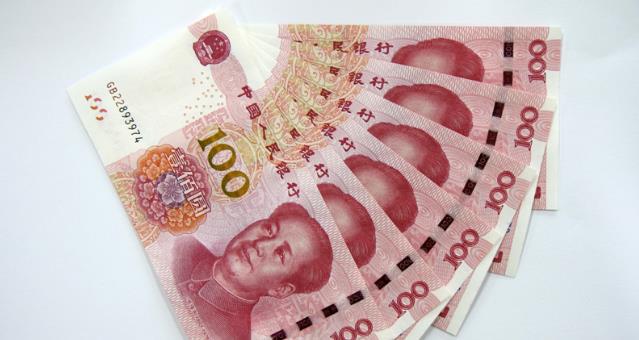
China's renminbi further strengthened against the US dollar on Monday, after the introduction of the central bank's new policy to prevent irrational sell-offs in the foreign exchange market. The currency's depreciation pressure is expected to ease in the near term, said analysts.
The renminbi's daily trading reference rate rose to 6.8508 per dollar on Monday, up from 6.8710 on Friday. The currency was allowed to trade up or down by 2 percent around the reference rate, or the central parity.
This rebound followed an announcement on the central bank's website late on Friday. It said that the country had resumed a "counter-cyclical factor" in the foreign exchange regime since August, to hedge against market's irrational sentiment toward a weaker yuan.
The market took immediate steps after the news on Friday, indicated by the fast rise of the spot rate in both onshore and offshore markets, as confidence to maintain a stable renminbi was strengthened.
"Influenced by a stronger US dollar and trade frictions, some pro-cyclical activities have shown up in the foreign exchange market. Based on an assessment of the market situation, banks, as the market makers for offering the yuan's central parity exchange rate against the dollar, have adjusted the regime," according to the central bank's statement.
The counter-cyclical factor is expected to help stabilize the yuan at a reasonable and equilibrium level in the future, said the People's Bank of China, the central bank, in the statement.
Xie Yaxuan, an analyst with China Merchants Securities, said the move is likely to ease the renminbi's depreciation pressure to some extent.
"Its effective exchange rate index, against a basket of major currencies, may return to around 94.7, if the countercyclical factor starts to take effect," said Xie. The index hit 92.33 on Aug 1, a record low since it was first introduced in November 2015. It peaked at 98.11 on June 19.
The renminbi weakened by nearly 6 percent against the US dollar over the past three months, and the market is concerned it may result in capital outflows if the depreciation pressure rises.
"It has showed that the central bank has adequate policy tools to sustain a relatively stable exchange rate at an equilibrium level," said Zhang Yu, an economist with Hu Chuang Securities.
She expected further moves are possible if the currency slumped lower than a "psychological threshold" of seven per dollar, and the current stabilized renminbi could remove the pressure of capital outflows.
In May 2017, a "counter-cyclical factor" was introduced for the first time to the existing pricing model of the yuan's daily trading reference rate, aiming to moderate pro-cyclical fluctuations driven by irrational sentiment in the foreign exchange market.
It was suspended in January, when the yuan appreciated against the dollar and cross-border capital flows showed stable trends.
The central bank also said on Friday that the current economic foundations are stable, and the economic restructuring progress has been pushed forward, with accelerating growth model transactions.
Li Bo, director of the People's Bank of China's monetary policy department, said at a news conference last week that the current renminbi exchange rate is mainly determined by market supply and demand.
Li said the central bank is confident it can keep the rate "basically stable at a reasonable equilibrium level" supported by the stable fundamentals of the Chinese economy.



















Latest comments